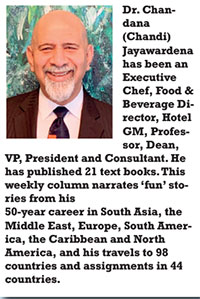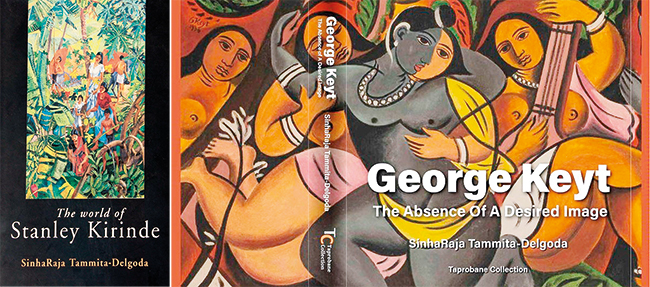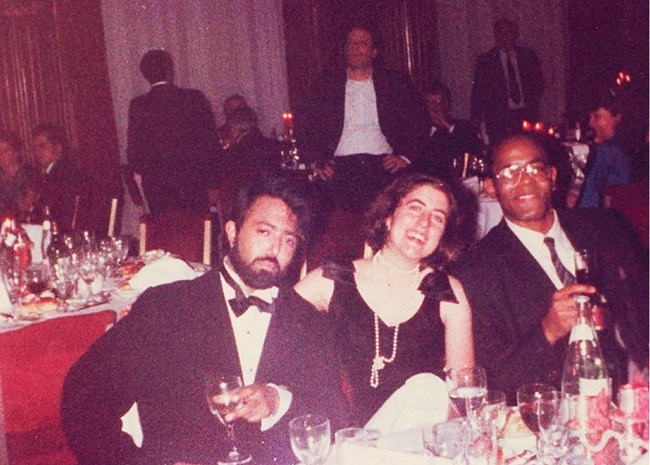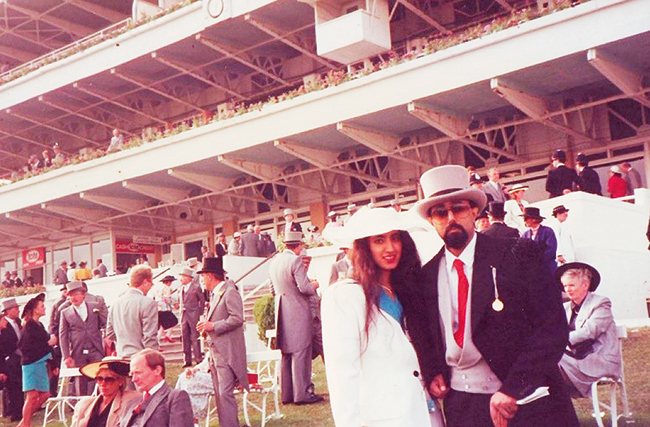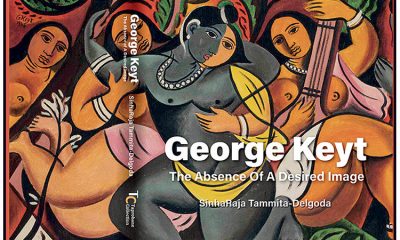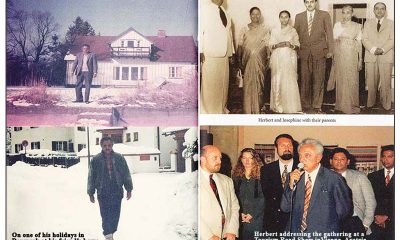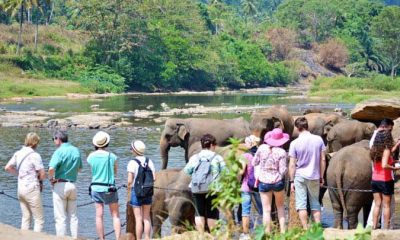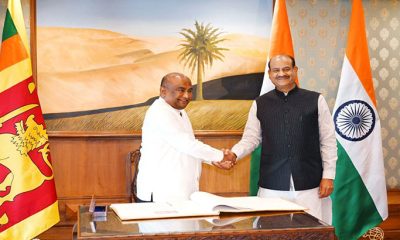Features
Dr. SinhaRaja Tammita-Delgoda Art Historian, Adventurer, Author, and Renaissance Man
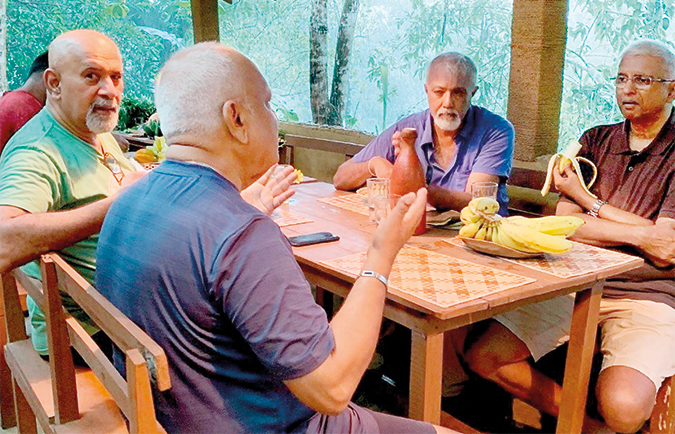
PLACES, PEOPLE & PASSIONS (3Ps)
Dr. Chandana (Chandi) Jayawardena DPhil
President – Chandi J. Associates Inc. Consulting, Canada
chandij@sympatico.ca
Profile
SinhaRaja is an explorer and an adventurer who has lived in war zones and reported on wars; he has explored jungles and climbed in the Hindu Kush. Historian, art historian, academic and author, he has produced some of the most important studies in recent years on the art, history, and culture of Sri Lanka. He has also enacted some of its greatest dance rituals and taught the first university course in the west on Sri Lankan Art and Architecture. His first film, the story of an expedition ‘In Search of the Malwatu Oya’, has won five international awards.
SLITHM Graduation 2023 & ‘karandu Atha’
On April 20, 2023. I was seated at a corner of the front row at the BMICH National Convention Centre, with a few veteran hoteliers. We were waiting for the Minister of Tourism to arrive as the chief guest of the annual graduation ceremony of Sri Lanka Institute of Tourism and Hotel Management (SLITHM). Most of the 1,500 seats of the main auditorium were full of relatives of the new graduands, their happy parents and tourism industry leaders.
Getting bored with the long delay, my hotel industry colleague seated next to me, Gemunu Goonewardena, started talking about the roles of elephants in Sri Lanka. “Professor, do you know that elephants working hard in the fields are not used to perform religious tasks like carrying the caskets at pageants?” Annoyed with the delay in commencing the event as advertised, I did not pay much attention to Gemunu’s remark.
“Is that so?”, I made unenthusiastic response. “Yes. For an example, the famous Maligawa tusker Raja of the Temple of the Tooth in Kandy, had very little work to do, except during the annual Kandy Perahera in August. Such tuskers are called with respect, ‘Karandu Atha’” — Gemunu continued to show his knowledge about elephants and our culture.
At that moment I was happy to see the large screen on the stage displaying the arrival of the chief guest and other VIPs welcomed at the entrance and ushered by the Chairman of SLITHM. Kandyan dancers and drummers were performing in front of the slow-moving VIP procession. “Look, the chief guest, that gentleman garlanded with orchids, is not the minister!” Gemunu alerted us.
Apparently, as the minister was too busy to attend the event, SLITHM had arranged a last minute substitute as the chief guest. This gentleman wore a white suit (which reminded me of the prefect’s attire for ceremonies at boys’ schools in Ceylon in 1960s). He appeared prominent among all other VIPs in dark suits, looking distinguished and walking like a king, serious, without a smile on his face. “Professor, look at him. That gentleman is certainly like a ‘Karandu Atha’!”, Gemunu whispered to my ear. I agreed.
A Keynote Speaker Par Excellence
None of veteran hoteliers seated in my row knew of this gentleman – Dr. SinhaRaja Tammita-Delgoda – but we were impressed when he was introduced as an Art Historian, Author, Lecturer, Public Speaker, Academic, Writer, and an award-winning Film-maker. We were even more impressed with his keynote speech – well prepared and well delivered, with a passion. I also liked his given name, the same as the greatest rainforest in Sri Lanka, which is steeped in deep legend and mystery, and since 1988, protected as an UNESCO World Heritage Site. I soon realised that, like the Sinharaja Rainforest, Dr. SinhaRaja Tammita-Delgoda had a mystic personality, which was not easy to analyse.
After nearly four-hours, when the graduation event ended, a few of us were invited to a post-event reception. When I saw the keynote speaker at this reception held in a very small meeting room, attended by about 50 VIPs, I was happy. He was surrounded by a few Colombo socialites who were picking Dr. SinhaRaja Tammita-Delgoda’s brains about topics related to their commercial interests, and close to his heart – horse-riding, eco-tourism, and indigenous food of Sri Lanka.
“Come on, Gemunu, let’s meet this interesting guy.” I approached him with some difficulty. Soon after we introduced ourselves, he introduced the ladies surrounding him to us. Although they were interesting, after greeting them quickly, I zoomed into have a good one-on-one chat with him. I broke the ice with a genuine compliment: “Dr. SinhaRaja Tammita-Delgoda, you delivered an excellent keynote.
Well done! I was inspired by your speech.” I He smiled and said, “Please call me SinhaRaja.” I was thinking that his name was quite a mouthful. Double barrel names are unusual in Sri Lanka, but he is an unusual person. Accomplished and versatile… in fact, truly a Renaissance Man!
After a five-minute chat, owing to some common interests such as art, history, writing, public speaking, lecturing and cinema, we clicked and mutually enjoyed our brief chat. He also liked when I joked about how Gemunu compared him to a ‘Karandu Atha’. Before we parted, we agreed to meet again prior to my return to Canada. Gemunu invited SinhaRaja to join me and two mutual friends for a full-day excursion to ‘Ceylon Culinary Trail’ in Ingiriya in a week’s time, just before my departure from Sri Lanka. SinhaRaja promptly accepted.
The very next day, I shared the links to some of my recent publications with him, and in return, SinhaRaja e-mailed Gemunu and me some links showcasing his recent work, including a YouTube file of his 2019 film: ‘In Search of the Malwatu Oya’ which was an artistic documentary about an adventurous 164-kilometre journey he took on the second longest river in Sri Lanka with a few other adventurers. Starting from the holy mountain of Ritigala, they travelled to the heart of an ancient civilization, the Raja Rata (Land of the Kings) to enter the Bay of Mannar of the Indian Ocean. It is the story of Sri Lanka’s most historic river and the beginning of an ancient civilization. I was not surprised it won five international awards.
‘Ceylon Culinary Trail’ Experience in Ingiriya
A week later, we commenced our trip to Ingiriya early in the morning picking up SinhaRaja at his house near Kotte. Our discussions in the car covered many interesting topics, including poetry. He was thankful when I presented a signed copy of my latest published work: ‘Emotions’ a book of visual poetry. When we arrived at Ingiriya, I realized that Sinharaja was familiar with the customs and rituals of the village, far better than other excursionists there.
After the welcome, and breakfast including dishes made with rare local ingredients, we were taken on a guided tour along a village trail through a rubber plantation. I then realized that SinhaRaja was much physically fitter than the rest of the group from Colombo and Canada! Despite a couple of breaks and drinking some refreshing young and king coconuts in between, we were exhausted by the time we returned to our base in Ingiriya. It was a hot and humid day.
“Sir, you will certainly feel better if you have a dip in this natural pool” – our guide (the husband of the host and cook) showed us a beautiful bathing spot connected to a gently flowing stream towards the Kalu Ganga. Without wasting any time, SinhaRaja got into the water, and we followed him. That cool water and toddy served to make us hungry for a highly anticipated lunch prepared with some ingredients previously unknown to the members of our group.
Topics of Conversation
Over a tasty authentic lunch experience enhanced by singing of old songs and folk poems by our lady host, we did not feel the time pass by. After lunch we engaged in a long conversation about various topics. SinhaRaja listened to our views more than expressing his own. We stayed there chatting for a long time through a sudden welcome downpour that lasted till early evening. It was a wonderful day with some great food for the belly and food for thought.
On our way back to Colombo SinhaRaja and I talked about some common aspects of our lives, the times we both lived and studied in England. I did my three levels of post-secondary education in England over a few decades with long breaks in between. In his case, SinghaRaja has done his bachelor’s, master’s, and doctoral degrees at one go! That was impressive, but I was more fascinated when he told me: “I never went to primary, middle, or upper school. I was home-schooled.”
SinhaRaja was surprised to hear that I was a special apprentice at the Dorchester under the great Chef Anton Mosimann. He was even more surprised to hear that I was a management observer at Le Meridien Piccadilly in London and that hotel’s two-Michelin star restaurant – Oak Room. “I used to dine in that restaurant with a girlfriend during my doctoral studies at the King’s College” he confided.
Our last topic of conversation that day was my wine and spirits studies in Europe. Just before we dropped him off at his house, he was asking me questions about my studies on whisky production in Scotland in 1982, when I was on a UN/ILO Fellowship. “I have a very old bottle of an expensive Japanese whisky, at home, which I’d like to taste with you.” He invited me home. “I was an expert 40 years ago… I don’t drink too much now.” I told him. “I insist my friend. Be my guest!” he persuaded me to spend an hour in his house looking at his collection of books, paintings, and old photographs. The Japanese whisky was also great. After that we kept in touch regularly and I sent him ten questions for this article:
Q: Out of all the places you have visited in Sri Lanka and overseas, what is your favourite and most interesting place?
A: One of the more interesting experiences was journeying to the dry, dusty teak forests of
Western India in search of the Asian Lion. The Gir Forest, in Gujarat, is the home of the
Asian Lion which once roamed the whole of Asia. Hunted to extinction under the British,
Asian Lions were preserved by an Indian prince, in a remote corner of Western India, still relatively unknown.
Q: Out of all the inspiring people you have met, who inspired you most to become an explorer and an adventurer?
A: Nihal Fernando, Sri Lanka’s greatest photographer. He and his protegee, Luxshman Nadaraja, taught me to see the land, instead of just thinking about it. Through Nihal Fernando I learned that Sri Lankan civilization, its art and architecture was inextricably linked to its environment. One cannot see one without the other.
Q: What was the most memorable experience you had during your undergraduate, graduate and doctoral studies in the United Kingdom?
A: Driving a MG Roadster Classic sports car with the top down in winter. It was memorable
because it gave me pneumonia. The other was being held by my arms and legs by four English thugs, who sang “Michael Row the Boat Ashore” as they banged my head against a car. I was saved by an old lady who attacked them with her umbrella. My other formative memory is discovering the work of Sri Lanka’s two great art historians – Ananda Coomaraswamy and Senake Bandaranayake in the library at the School of Oriental and African Studies.
Q: What was the most challenging experience you had as a Visiting Fulbright Scholar in the USA?
A: Being stopped at Madison airport by security because I was wearing cufflinks. As the alarms went off, everyone screamed “he has metal in his shirt” and pointed their guns
at me. I had to take the cufflinks off and roll them across the floor. Afterwards, they asked me, “What are they for, why are you wearing them”. I said: “To hold my sleeves together” They felt sorry for me. “Son, this is America. We have buttons here!”
Q: As a student of the early phases of British expansion in India during the 18th century, can you single out one main scholarly contribution you have made to the body of knowledge?
A: I made a study of one of the first Englishman to write a history of India.
Q: What were your main discoveries during your time at Ridi Vihare to study medieval Sinhalese culture?
A: Apart from patience, self-control, and self-discipline, I also learned to appreciate Kandyan Art. I grew to realize that it was not “folk art” and began to see it for what it was, a form of miniature painting: meticulous, precise, and controlled.
Q: What was the most challenging experience you had as a reporter during the final stages of Eelam War IV?
A: Trying not to jump into the air when explosions went off near me. The challenge was trying not to show terror in front of men who coped with fear every day.
Q: Can you explain the inspiration for and the most memorable experience during the making of ‘In Search of Malwatu Oya’?
A: The inspiration was the magic of the unknown, of going back into time. Memorable, as we were travelling in long canoes. I have never been so close to so many crocodiles for so long.
Q: What were the different approaches you took in producing two of the great works on Stanley Kirinde and George Keyt?
A: Both are huge ambitious works of art and scholarship. One project was hugely thorough and had great resources behind it. The other was done at the height of Covid, the Aragalaya, a time of no power, no fuel, no food, no order and now, no money.
Keyt was an outsider and a rebel. Kirinde was an insider and like most insiders, he was conservative and more conformist. Kirinde was part of an ancient culture and a living civilization. Keyt was the product of a recent and derivative colonial culture. At a time when colonial culture was dominant, Keyt went out of his way to reject it and embrace a totally different world. This makes him quite unique.
As there have been many studies on Keyt, our objective was to show works of art which were not published before, and which were not widely known. At the same time, we sought to look closely at the influences behind Keyt’s life and art which have not been so well studied and are not so well known.
With Kirinde, almost everyone went out of their way to help. With Keyt it was different. Great international auction houses and collectors all over the world went out of their way to help. However, in Sri Lanka two local organizations went out of their way not to help. One was an organization associated with the legacy of George Keyt, the other was an organization associated with the legacy of Lionel Wendt. Needless to say, both organizations have gone out of their way to assist and work with foreign scholars and experts.
Q: You told me that you do not like to use the term: ‘coffee table books’ in describing your works on Stanley Kirinde and George Keyt. Why?
A: History of Art is a serious intellectual and scholastic discipline, which entails the study and analysis of the visual arts. It seeks to understand art, sculpture, architecture, craft, and decoration, in their cultural and historic context.
The term coffee table is used mainly in Sri Lanka because people do not like to read. Sri Lankans generally prefer books with pictures which they can glance through without too much effort. They then keep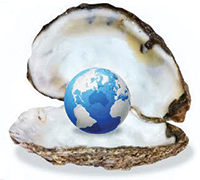 them on long low tables for everyone to see. That is why we call them coffee table books. In the rest of the subcontinent, people not only look at the pictures, but they also read about them and think about them.
them on long low tables for everyone to see. That is why we call them coffee table books. In the rest of the subcontinent, people not only look at the pictures, but they also read about them and think about them.
Next week, 3Ps will feature a Lawyer, CEO, and a Tourism Visionary …
Features
2025 Budget: Challenges, hopes and concerns
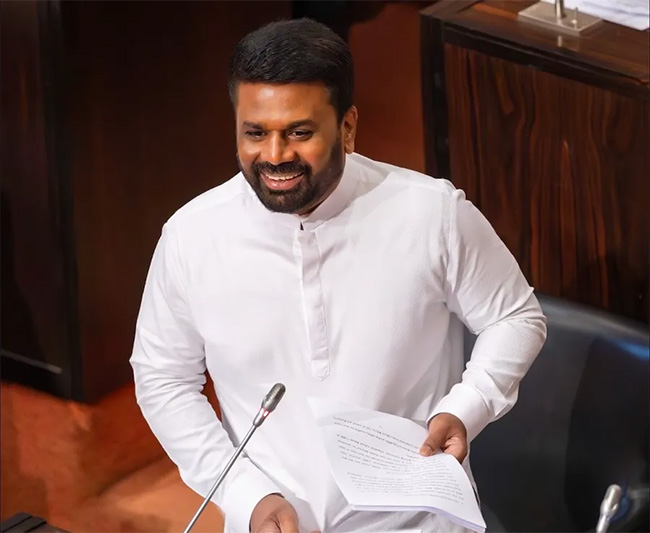
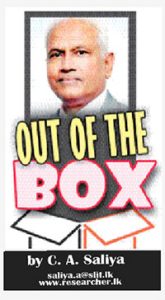 Sri Lanka’s recent government budget has sparked both hope and concern. While some see it as a positive step toward improving the country’s economy, others worry about whether the government’s proposals can be successfully implemented. This analysis explores the budget’s approach and what it could mean for the country’s financial future.
Sri Lanka’s recent government budget has sparked both hope and concern. While some see it as a positive step toward improving the country’s economy, others worry about whether the government’s proposals can be successfully implemented. This analysis explores the budget’s approach and what it could mean for the country’s financial future.
Credit Rating Improvement and What It Means
Fitch Ratings recently upgraded Sri Lanka’s credit rating, moving it from a risky “Restricted Default” (RD) to a “CCC+” rating. This shows that the country’s financial situation is improving, though it still faces a high risk of default. The government aims to increase its revenue, especially through trade taxes and income tax, but experts warn that the success of these plans is uncertain, particularly when it comes to lifting restrictions on imports.
Economic Democracy and Market Regulation
The government claims that this budget is based on the idea of “economic democracy,” aiming to balance market forces with government control. While it promises fairer distribution of wealth, critics argue that it still relies on market-driven policies that may not bring the desired changes. The budget seems to follow similar strategies to past administrations, despite the government’s claim of pursuing a new direction.
The current government, led by a Marxist-influenced party, has shifted its approach by aligning with global economic institutions like the International Monetary Fund (IMF). This represents a departure from its previous, more radical stance. The government’s vision focuses on rural development, support for small businesses, and an export-driven economy, continuing strategies from previous administrations rather than implementing drastic changes.
Stability and Continuity in Policy
One of the more positive aspects of the budget is its consistency with the fiscal policies of the past government. Sri Lanka’s economy has suffered from sudden policy changes in the past, often triggered by political transitions. By maintaining a steady course, the current government seeks to ensure stability in the recovery process, despite criticisms from political opponents.
Sri Lanka continues to face significant financial challenges, including a large budget deficit. The government’s spending in 2025 is expected to exceed its revenue by about LKR 2.2 trillion, leading to a deficit of around 6.7% of GDP. To cover this gap, the government plans to borrow both locally and internationally. However, debt repayment remains a major concern, with billions needed to settle existing obligations.
Tax Revenue and Public Spending Issues
Sri Lanka’s tax collection remains critically low, which worsens the country’s financial troubles. Tax evasion, exemptions, and inefficient administration make it hard to collect sufficient revenue. The government has raised VAT to 18% to boost income, but this could increase inflation, further harming families’ ability to afford basic goods. Additionally, corruption in public institutions continues to drain state resources, preventing effective use of funds for national development.
The Auditor General’s Department recently uncovered financial irregularities in several ministries, reinforcing concerns over systemic corruption.
Sectoral Allocations, Budget Inequities and Falures
Despite claims of prioritizing social welfare, the government’s budget allocation for key sectors remains insufficient. For example, while the government allocated LKR 500 million to improve 379 childcare centers nationwide, this amount pales in comparison to regional standards. In neighboring Bangladesh, the government spends around USD 60 per child annually, while Sri Lanka spends less than USD 25. It’s unclear whether this allocation represents an increase in funding or just a reshuffling of existing resources.
One of the biggest criticisms of the budget is its failure to address the high cost of essential goods, going against promises made during the election. Prices for basic items like rice and coconut are still high, due to supply chain issues, rising fuel costs, and tax policies. The absence of targeted subsidies or price controls has led to growing public dissatisfaction.
Public sector salary adjustments are also a point of contention. The government plans to introduce salary increases in three phases, with the full benefits expected by 2027. However, much of this increase was already granted in previous years through allowances, meaning the adjustment is more about restructuring existing funds than providing real pay increases. This slow approach raises concerns about whether employees’ purchasing power will improve, especially with inflation still a pressing issue.
The government has also urged the private sector to raise wages, but past experiences suggest that private companies often resist such requests. Without formal agreements or laws to enforce wage hikes, there is uncertainty over whether employees will see real wage growth that matches the rising cost of living.
Neglecting Vulnerable Workers and Obstinate Behaviour
Another group left out of the budget’s plans is casual and contract workers, who were expecting improvements in job security and wages, particularly those earning below LKR 1,800 per day. Despite promises made during the election, these workers have not seen any significant changes, which raises doubts about the government’s commitment to improving labor rights and income equality.
The government’s handling of private sector wage increases has also been criticized for a lack of transparency. In a televised discussion, A government representative became visibly agitated when questioned about the date of the agreement with employers, displaying obstinate behavior and refusing to answer the opposition MP’s inquiry.
Review of the Banking Sector’s Role in Govt. Revenue and Economic Growth
The banking sector helps generate national revenue through taxes such as corporate income tax, value-added tax (VAT), and financial transaction levies. However, the claim that it contributed 10% to government revenue in 2024 needs to be understood in context. Past figures have shown fluctuations in financial sector taxes, influenced by economic conditions and fiscal policies. The government’s growing reliance on the banking sector for tax revenue could signal financial stress, and this situation warrants further analysis to understand its long-term sustainability.
While the Sri Lanka Bankers Association (SLBA) emphasizes banks’ support for implementing the government’s budget proposals, their ability to do so effectively depends on broader economic conditions, regulations, and financial stability. Sri Lanka has faced persistent economic issues like high public debt and inflation, which could hamper the ability of banks to help implement fiscal policies effectively. The real impact of the banking sector in driving economic growth remains uncertain, especially given factors like currency instability and a lack of foreign investment.
Digitization and Financial Transparency
The proposal to introduce Point-of-Sale (POS) machines at VAT-registered businesses aligns with global trends in digital financial integration. This move is expected to improve transparency, reduce tax evasion, and increase banking efficiency. Research has shown that digital payments can boost financial inclusion and reduce informal economic activities. However, Sri Lanka faces challenges such as limited digital infrastructure, cybersecurity concerns, and resistance from businesses that still prefer cash transactions.
More digital services could strengthen anti-money laundering (AML) controls, improve transaction monitoring, and reduce cyber threats. However, shifting to a fully digital banking system requires substantial investments in technology, regulatory alignment, and digital literacy among consumers.
Support for SMEs and Development Banking Initiatives
The creation of a Credit Guarantee Institute for SMEs is a significant step. Research shows that credit guarantees can reduce lending risks and improve SME access to financing. However, past state-managed financial programs in Sri Lanka have been inefficient, often involving politicized lending practices.
For these new initiatives to succeed, they will need transparent governance, careful credit risk management, and strong regulations….
Conclusion
Sri Lanka’s banking sector is crucial for economic stability and revenue generation, but the increasing fiscal demands and the push for digital transformation present both significant opportunities and risks. Policymakers need to avoid over-taxation that could stifle credit expansion and investment while addressing digital finance challenges like cybersecurity and infrastructure gaps. The 2025 budget underscores the nation’s vulnerable fiscal situation, where efforts for economic stabilization are hampered by public debt, corruption, and welfare constraints. Achieving sustainability requires comprehensive tax reforms, better public expenditure management, and stronger anti-corruption measures. Without these reforms, Sri Lanka faces prolonged economic hardship, rising inequalities, and diminishing trust in governance. The budget also reflects a blend of ideological transformation and economic pragmatism, with policies largely aligning with past approaches. Fitch Ratings’ cautious optimism signals the potential for recovery, contingent on successful policy implementation. Ultimately, policy continuity is seen as Sri Lanka’s best bet for navigating fiscal uncertainty and achieving economic stability.
(The writer, a senior Chartered Accountant and professional banker, is Professor at SLIIT University, Malabe. He is also the author of the “Doing Social Research and Publishing Results”, a Springer publication (Singapore), and “Samaja Gaveshakaya (in Sinhala). The views and opinions expressed in this article are solely those of the author and do not necessarily reflect the official policy or position of the institution he works for. He can be contacted at saliya.a@slit.lk and www.researcher.com)
Features
Rethinking cities – Sustainable urban innovation
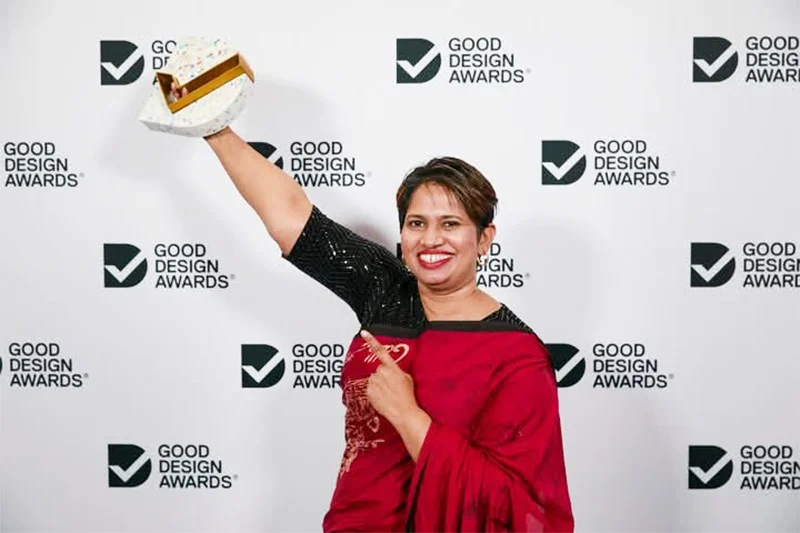
by Ifham Nizam
Dr. Nadeesha Chandrasena is an urban innovator reshaping the landscape of sustainable development. With a background that spans journalism, banking, and military engineering, she brings a unique perspective to urban planning and environmental resilience.
Her work integrates cutting-edge technology with human-centered design, ensuring that cities of the future are not only livable but also adaptive to climate change and rapid urbanisation.
In this interview with The Island, Dr. Chandrasena shares insights into her journey—from her early days in journalism to pioneering the Smart Drain Initiative, a groundbreaking infrastructure project addressing urban drainage inefficiencies. She discusses the critical role of community engagement, the challenges of balancing innovation with political realities, and the urgent need for sustainable urban solutions in Sri Lanka and beyond.
Her story is one of relentless curiosity, problem-solving, and a deep commitment to building better cities. As she puts it, “Urbanisation is inevitable; our challenge is to shape it in ways that are inclusive, sustainable, and forward-thinking.”
Urbanisation is one of the defining challenges of the 21st century, and few understand its complexities better than Dr. Chandrasena. A trailblazer in sustainable urban development, she has dedicated her career to bridging the gap between technological innovation and environmental sustainability. Through her work, she emphasises a crucial message: cities must evolve—not just grow.
From Journalism to Urban Innovation
Dr. Chandrasena’s career path is anything but conventional. Beginning as a journalist, she honed her skills in field research and community engagement, which later became instrumental in her work as an urban planner. “Journalism taught me how to listen to people’s stories and understand the realities on the ground,” she explains. This background helped her develop urban solutions rooted in real-world insights rather than abstract theories.
Her transition into urban innovation was fueled by a deep-seated passion for environmental resilience. After a stint in banking and serving in the Sri Lanka Army Corps of Engineers, she pursued town and country planning, ultimately integrating her diverse experiences to address urban challenges holistically.
The Smart Drain Initiative: A Game Changer in Urban Infrastructure
One of Dr. Chandrasena’s most groundbreaking contributions is the Smart Drain Initiative—a next-generation urban drainage system designed to combat flooding and waste accumulation. Implemented in areas like Balapola and Ambalangoda, this technology incorporates IoT-based monitoring, predictive maintenance, and automated waste filtration to enhance resilience against climate change.
“Storm drains are often neglected, but they are the foundation of a city’s flood resilience,” she says. By modernising drainage infrastructure, her initiative is setting a precedent for cities worldwide to rethink their approach to urban water management.
Livability as the Core Urban Challenge
For Dr. Chandrasena, urban planning is not just about infrastructure—it’s about people. She identifies livability as the root problem that must be addressed in city planning. “Congestion, pollution, lack of green spaces, and inefficient waste management are all symptoms of poor urban planning,” she explains. Her work focuses on designing cities that prioritise well-being, accessibility, and sustainability.
Sri Lanka, in particular, faces unique challenges due to rapid urbanisation. With cities like Colombo struggling to accommodate a massive influx of commuters, Dr. Chandrasena advocates for affordable housing solutions near economic hubs and improvements in public transportation. “A city’s economic success should not come at the cost of its residents’ quality of life,” she insists.
Technology and Community Engagement: The Future of Urban Development
Dr. Chandrasena sees technology as a powerful tool for fostering inclusive urban development. From using social media for community consultations to deploying smart infrastructure, she believes digital solutions can democratise urban planning. “We need to move beyond traditional engagement methods and empower people through accessible technology,” she says.
Her leadership philosophy reflects this inclusive approach. Through initiatives like the MyTurn Internship Platform, she mentors young professionals, encouraging them to take an active role in shaping the future of cities. “Leadership is not about authority—it’s about creating opportunities for collaboration,” she adds.
Global Urban Challenges and the Need for Collaboration
Urban issues are not confined to national borders. Dr. Chandrasena highlights the importance of global partnerships, citing the twin-city concept as a model for knowledge exchange. By pairing cities with similar challenges—such as Galle, Sri Lanka, and Penang, Malaysia—municipalities can co-create solutions that address both local and global urban challenges.
Her work has not gone unnoticed. She recently won Australia’s Good Design Award for Best in Class Engineering Design, a testament to the impact of her innovative approaches.
Call to Action for Sustainable Cities
Dr. Chandrasena’s vision for the future is clear: cities must be designed to be resilient, inclusive, and sustainable. While challenges like climate change and urban congestion persist, she remains optimistic. “There are no perfect cities—just as there are no perfect people. But by striving for practical solutions, we can make cities better for everyone.”
Her journey—from journalist to urban innovator—demonstrates that change begins with a vision and the determination to act on it. As urbanisation accelerates, her work serves as a blueprint for how cities can not only survive but thrive in an ever-evolving world.
Features
Need to appreciate SL’s moderate politics despite govt.’s massive mandate
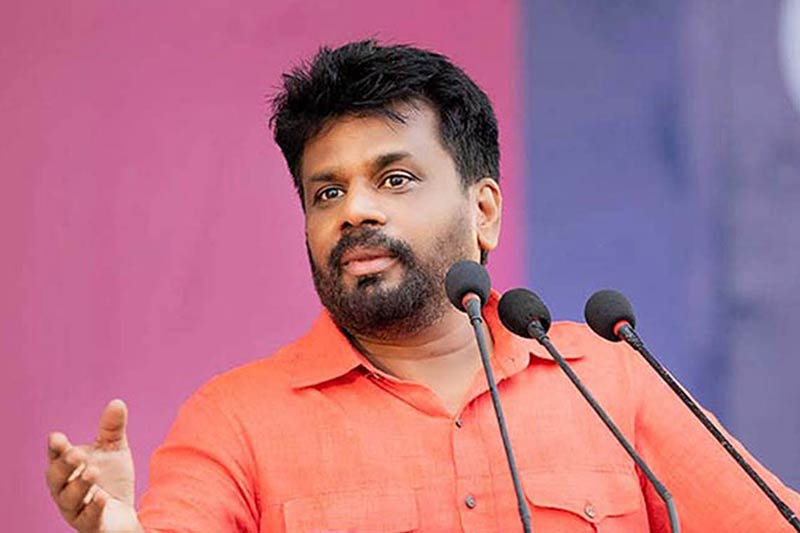
by Jehan Perera
President Donald Trump in the United States is showing how, in a democratic polity, the winner of the people’s mandate can become an unstoppable extreme force. Critics of the NPP government frequently jibe at the government’s economic policy as being a mere continuation of the essential features of the economic policy of former president, Ranil Wickremesinghe. The criticism is that despite the resounding electoral mandates it received, the government is following the IMF prescriptions negotiated by the former president instead of making radical departures from it as promised prior to the elections. The critics themselves do not have alternatives to offer except to assert that during the election campaign the NPP speakers pledged to renegotiate the IMF agreement which they have done only on a very limited basis since coming to power.
There is also another area in which the NPP government is following the example of former President Ranil Wickremesinghe. During his terms of office, both as prime minister and president, Ranil Wickremesinghe ruled with a light touch. He did not utilise the might of the state to intimidate the larger population. During the post-Aragalaya period he did not permit street protests and arrested and detained those who engaged in such protests. At the same time with a minimal use of state power he brought stability to an unstable society. The same rule-with-a-light touch approach holds true of the NPP government that has succeeded the Wickremesinghe government. The difference is that President Anura Kumara Dissanayake has an electoral mandate that President Wickremesinghe did not have in his final stint in power and could use his power to the full like President Trump, but has chosen not to.
At two successive national elections, the NPP obtained the people’s mandate, and at the second one in particular, the parliamentary elections, they won an overwhelming 2/3 majority of seats. With this mandate they could have followed the “shock and awe” tactics that are being seen in the U.S. today under President Donald Trump whose party has won majorities in both the Senate and House of Representatives. The U.S. president has become an unstoppable force and is using his powers to make dramatic changes both within the country and in terms of foreign relations, possibly irreversibly. He wants to make the U.S. as strong, safe and prosperous as possible and with the help of the world’s richest man, Elon Musk, the duo has become seemingly unstoppable in forging ahead at all costs.
EXTREME POWER
The U.S. has rightly been admired in many parts of the world, and especially in democratic countries, for being a model of democratic governance. The concepts of “checks and balances” and “separation of powers” by which one branch of the government restricts the power of the other branches appeared to have reached their highest point in the U.S. But this system does not seem to be working, at least at the present time, due to the popularity of President Trump and his belief in the rightness of his ideas and Elon Musk. The extreme power that can accrue to political leaders who obtain the people’s mandate can best be seen at the present time in the United States. The Trump administration is using the president’s democratic mandate in full measure, though for how long is the question. They have strong popular support within the country, but the problem is they are generating very strong opposition as well, which is dividing the U.S. rather than unifying it.
The challenge for those in the U.S. who think differently, and there are many of them at every level of society, is to find ways to address President Trump’s conviction that he has the right answers to the problems faced by the U.S. which also appears to have convinced the majority of American voters to believe in him. The decisions that President Trump and his team have been making to make the U.S. strong, safe and prosperous include eliminating entire government departments and dismissing employees at the Consumer Financial Protection Bureau (CFPB), Centers for Disease Control and Prevention (CDC) and the Food and Drug Administration (FDA) which were established to protect the more disadvantaged sectors of society. The targets have included USAID which has had consequences for Sri Lanka and many other disadvantaged parts of the world.
Data obtained from the Department of External Resources (ERD) reveal that since 2019, USAID has financed Sri Lankan government projects amounting to Rs. 31 billion. This was done under different presidents and political parties. Projects costing USD 20.4 million were signed during the last year (2019) of the Maithripala Sirisena government. USD 41.9 million was signed during the Gotabaya Rajapaksa government, USD 26 million during the Ranil Wickremesinghe government, and USD 18.1 million so far during the Anura Kumara Dissanayake government. At the time of the funding freeze, there were projects with the Justice Ministry, Finance Ministry, Environment Ministry and the Energy Ministry. This is apart from the support that was being provided to the private sector for business development and to NGOs for social development and good governance work including systems of checks and balances and separation of powers.
MODERATE POLITICS
The challenge for those in Sri Lanka who were beneficiaries of USAID is to find alternative sources of financing for the necessary work they were doing with the USAID funding. Among these was funding in support of improving the legal system, making digital technology available to the court system to improve case management, provision of IT equipment, and training of judges, court staff and members of the Bar Association of Sri Lanka. It also included creating awareness about the importance of government departments delivering their services in an inclusive manner to all citizens requiring their services, and providing opportunities for inter-ethnic business collaboration to strengthen the economy. The government’s NGO Secretariat which has been asked to submit a report on USAID funding needs to find alternative sources of funding for these and give support to those who have lost their USAID funding.
Despite obtaining a mandate that is more impressive at the parliamentary elections than that obtained by President Trump, the government of President Anura Kumara Dissanayake has been more moderate in its efforts to deal with Sri Lanka’s problems, whether in regard to the economy or foreign relations. The NPP government is trying to meet the interests of all sections of society, be they the business community, the impoverished masses, the civil society or the majority and minority ethnic and religious communities. They are trying to balance the needs of the people with the scarce economic resources at their disposal. The NPP government has demanded sacrifice of its own members, in terms of the benefits they receive from their positions, to correspond to the economic hardships that the majority of people face at this time.
The contrast between the governance styles of President Trump in the U.S. and President Dissanayake in Sri Lanka highlights the different paths democratic leaders can take. President Trump is attempting to decisively reshape the U.S. foreign policy, eliminating entire government departments and overwhelming traditional governance structures. The NPP government under President Dissanayake has sought a more balanced, inclusive path by taking steps to address economic challenges and governance issues while maintaining stability. They are being tough where they need to be, such as on the corruption and criminality of the past. They need to be supported as they are showing Sri Lankans and the international community how a government can use its mandate without polarising society and thereby securing the consensus necessary for sustainable change.
-
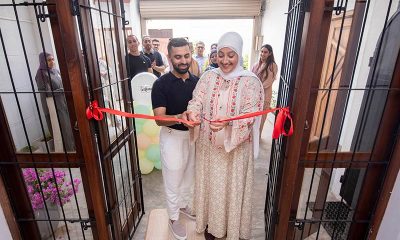
 Business3 days ago
Business3 days agoSri Lanka’s 1st Culinary Studio opened by The Hungryislander
-
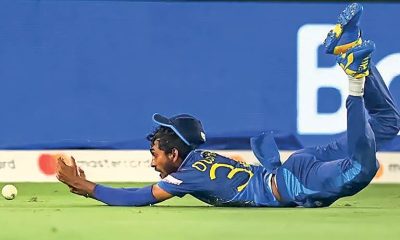
 Sports4 days ago
Sports4 days agoHow Sri Lanka fumbled their Champions Trophy spot
-
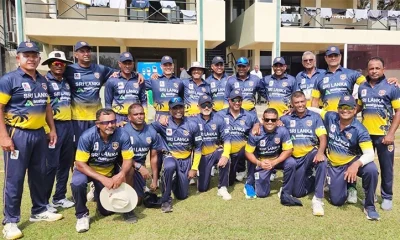
 Sports7 days ago
Sports7 days agoSri Lanka face Australia in Masters World Cup semi-final today
-

 News7 days ago
News7 days agoCourtroom shooting: Police admit serious security lapses
-
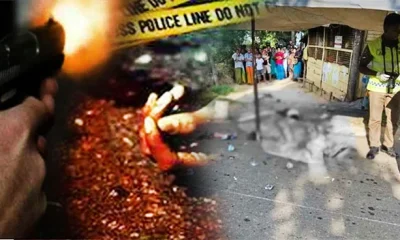
 News7 days ago
News7 days agoUnderworld figure ‘Middeniye Kajja’ and daughter shot dead in contract killing
-
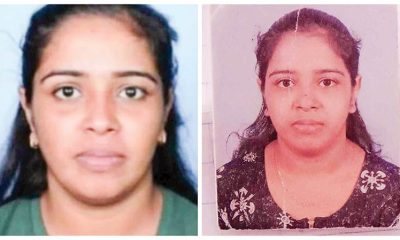
 News6 days ago
News6 days agoKiller made three overseas calls while fleeing
-
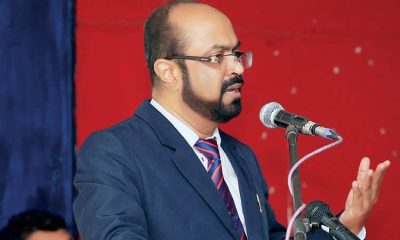
 News5 days ago
News5 days agoSC notices Power Minister and several others over FR petition alleging govt. set to incur loss exceeding Rs 3bn due to irregular tender
-
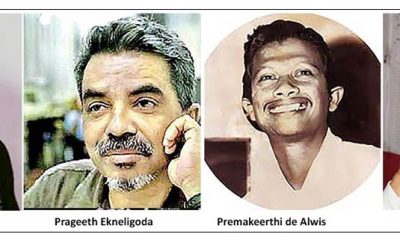
 Features4 days ago
Features4 days agoThe Murder of a Journalist

